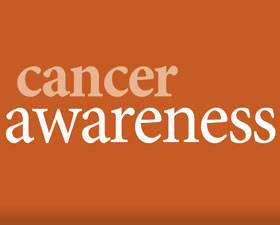The 411 on carcinogens
Most families across the globe have been affected by cancer. Affecting millions of lives each year, cancer does not discriminate.A host of factors can determine if a person gets cancer. One of the factors that can influence if a person gets cancer is his or her exposure to carcinogens. Though many people have heard of carcinogens, those same people might be less familiar with what carcinogens actually are, and if there's anything they can do to reduce exposure to and protect themselves from these potentially deadly substances.
What is a carcinogen?
Substances and exposures that can lead to cancer are called carcinogens. Carcinogens do not always cause cancer, and substances considered carcinogens have varying levels of cancer-causing potential. Minimal exposure to certain carcinogens may increase one's risk of getting cancer significantly, while other carcinogens may cause cancer only after prolonged exposure at high levels.
What happens when a person has cancer?
Cancer is caused by changes in a cell's DNA. This change can be caused by carcinogens, though some carcinogens have no direct impact on DNA. For example, a carcinogen may cause cells to divide at a faster rate than is normal, and that accelerated division can increase the chances that DNA changes will occur.
What are some examples of exposures?
Outside exposures, often referred to as environmental factors, can also be considered carcinogens. The following are a few of the more common environmental factors that qualify as carcinogens.
* Lifestyle factors: Poor nutrition, use of tobacco and lack of physical activity are a few of the lifestyle exposures that can lead to cancer.
* Naturally occurring exposures: Exposure to radon gas, infectious agents and ultraviolet light are some of the naturally occurring exposures that can lead to cancer.
* Medical treatments: Men, women and children who were treated for certain ailments might have been exposed to certain factors that can lead to cancer. These include treatments like chemotherapy, radiation and medications that suppressed the immune system.
What are some examples of substances that are known carcinogens?
As previously mentioned, not all carcinogens will cause cancer. For instance, some that are known human carcinogens, including alcoholic beverages, will not necessarily cause cancer. But the following are a few of the more recognizable substances considered known human carcinogens.
* Asbestos
* Coal, indoor emissions from household combustion
* Formaldehyde
* Mineral oils, untreated or mildly treated
* Neutron radiation
* Nickel compounds
* Shale oils
* Tobacco smoke and smokeless tobacco
Are there different classifications of carcinogens?
The International Agency for Research on Cancer has spent the last 30 years evaluating the cancer-causing potential of more than 900 likely substances and exposures. That research has enabled the IARC to devise a system for classifying carcinogens as follows:
* Group 1: Carcinogenic to humans
* Group 2A: Probably carcinogenic to humans
* Group 2B: Possibly carcinogenic to humans
* Group 3: Unclassifiable as to carcinogenicity in humans
* Group 4: Probably not carcinogenic to humans
Because testing carcinogens is so difficult (it is unethical to test on humans), many of the carcinogens studied by the IARC are classified as being a probable, possible or unknown risk. Slightly more than 100 of the candidates studied by the IARC are classified as Group 1 carcinogens.
It's important to note that, in addition to the IARC rating system, other agencies and groups, including the National Toxicology Program and the U.S. Environmental Protection Agency, have developed their own rating systems to determine the cancer-causing potential of certain substances and exposures.
For more information on carcinogens, including a list of known human carcinogens, visit the American Cancer Society at www.cancer.org.



